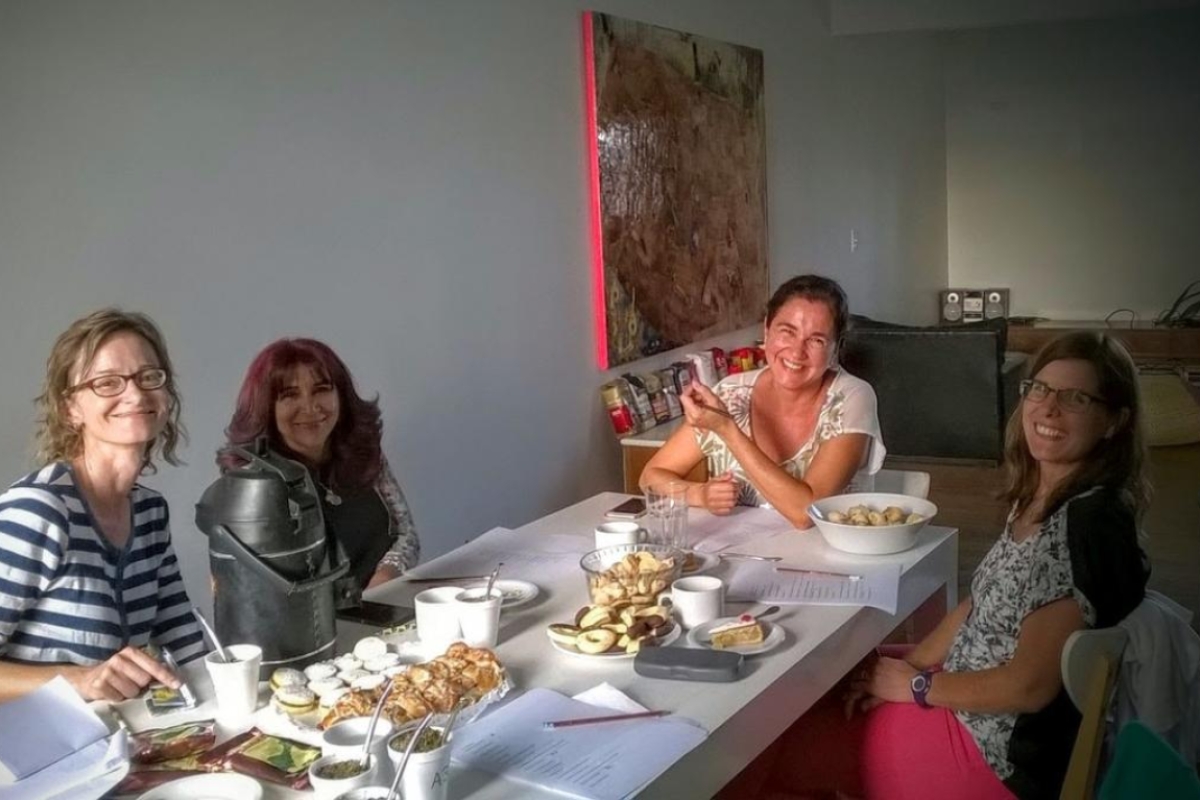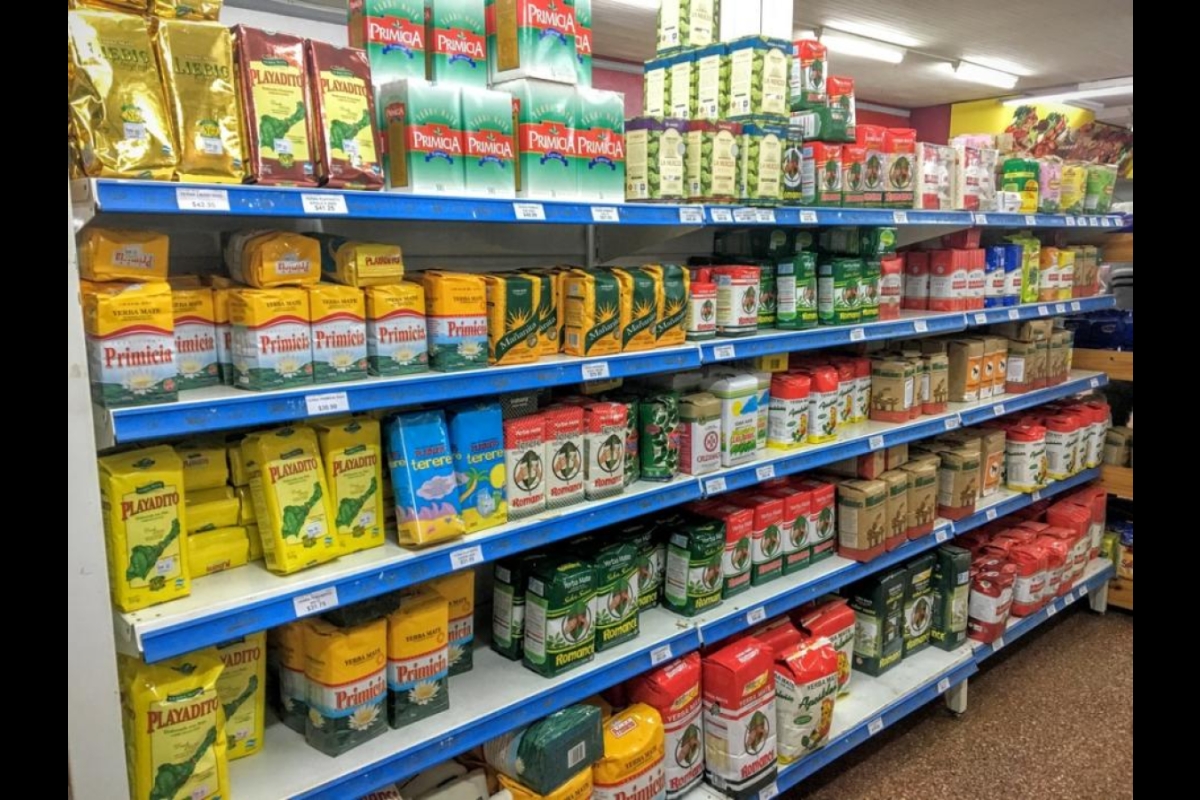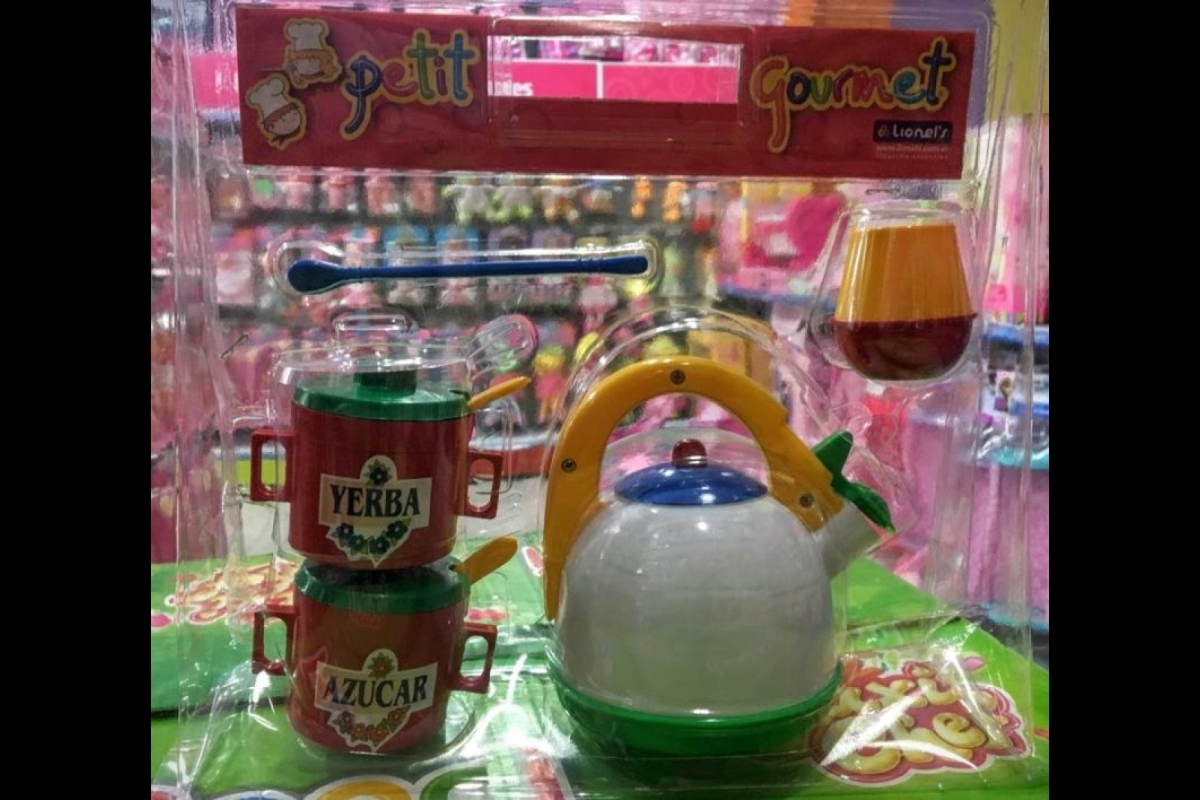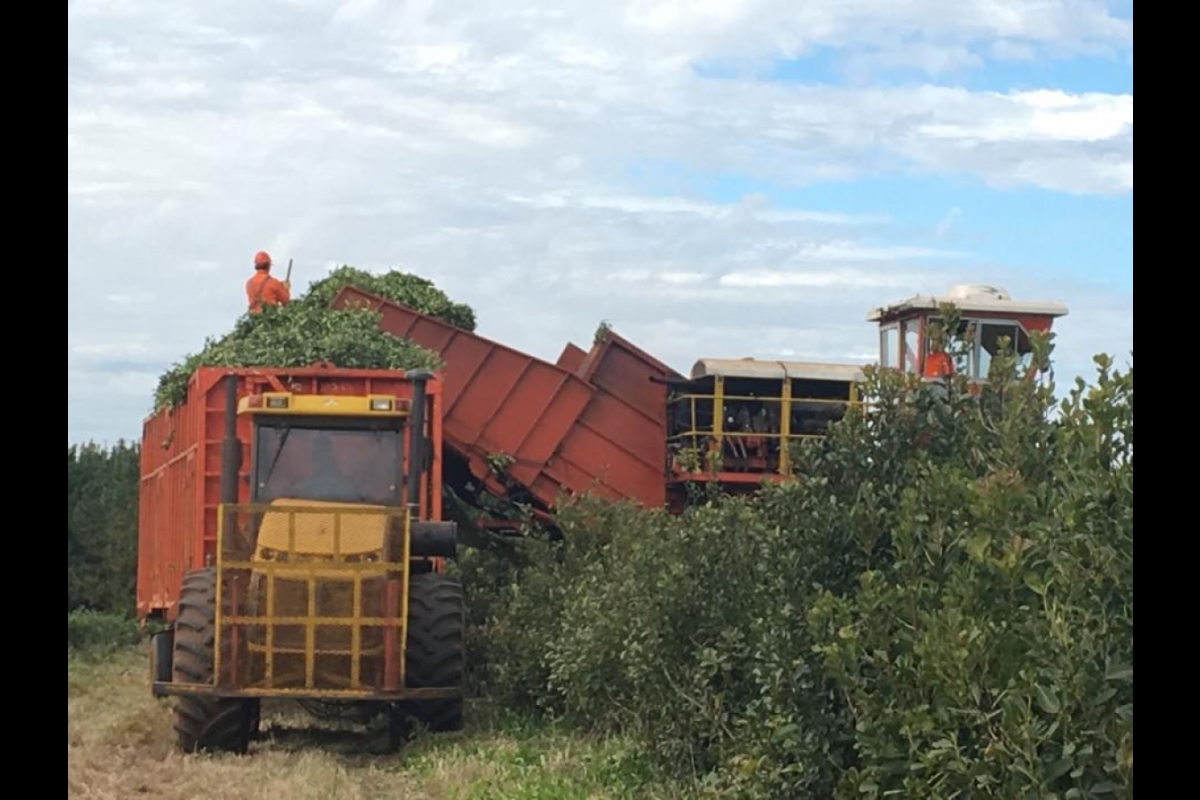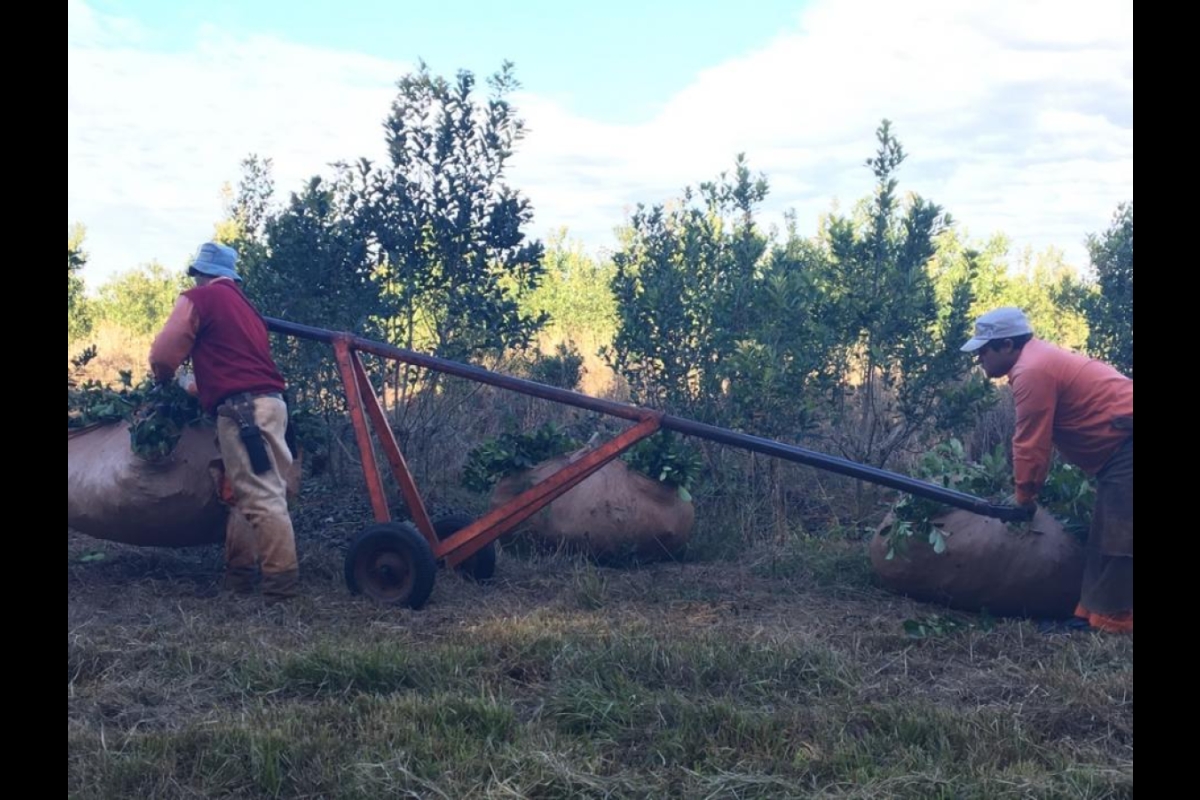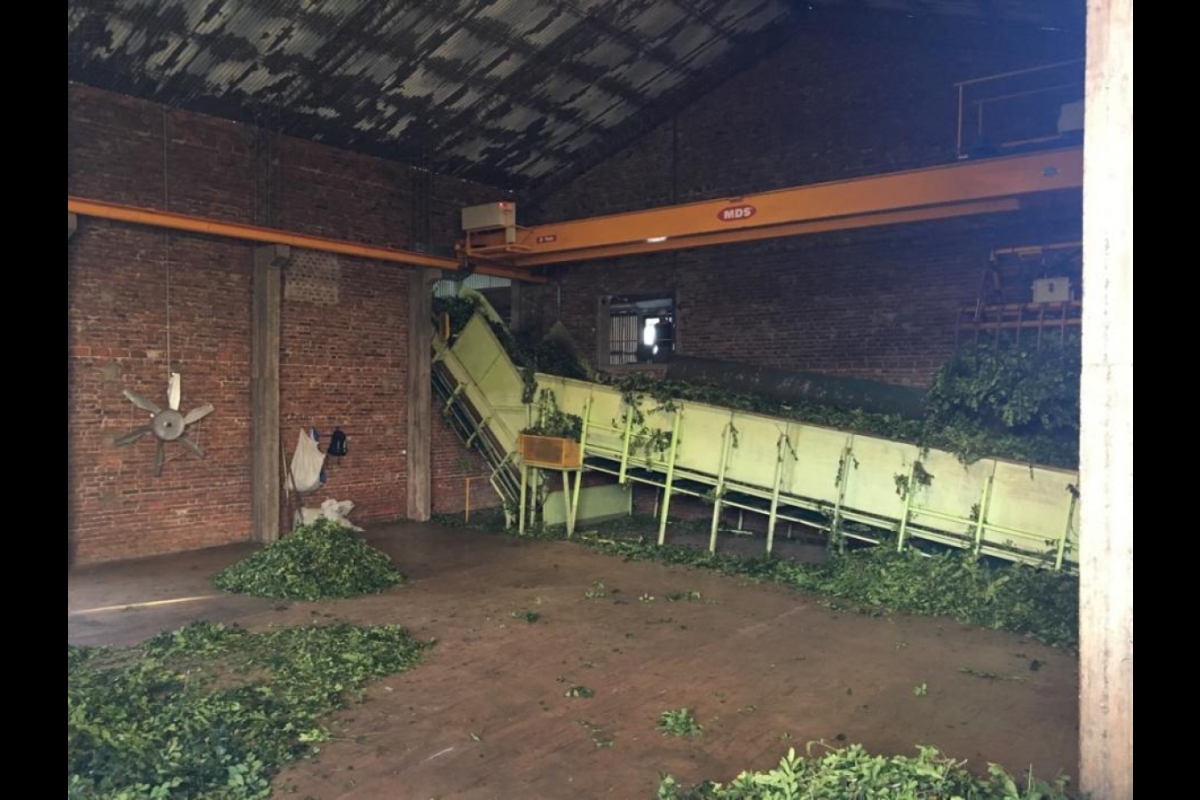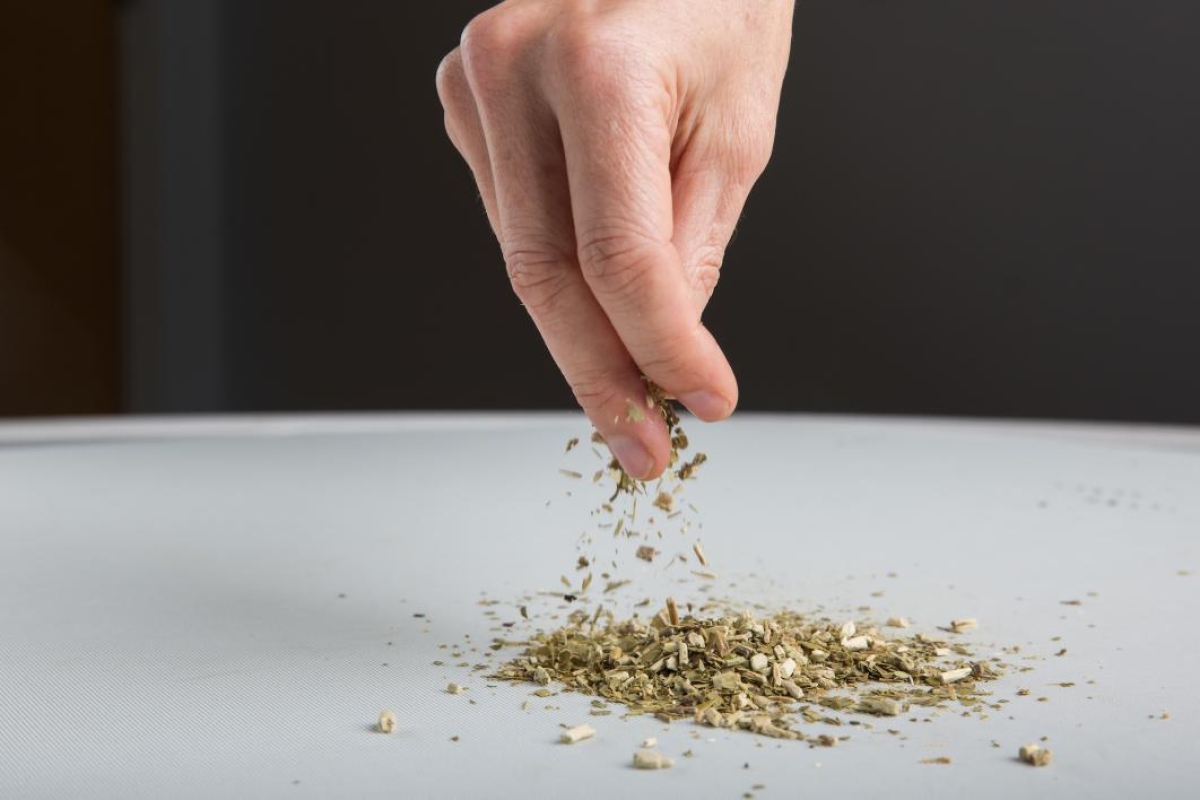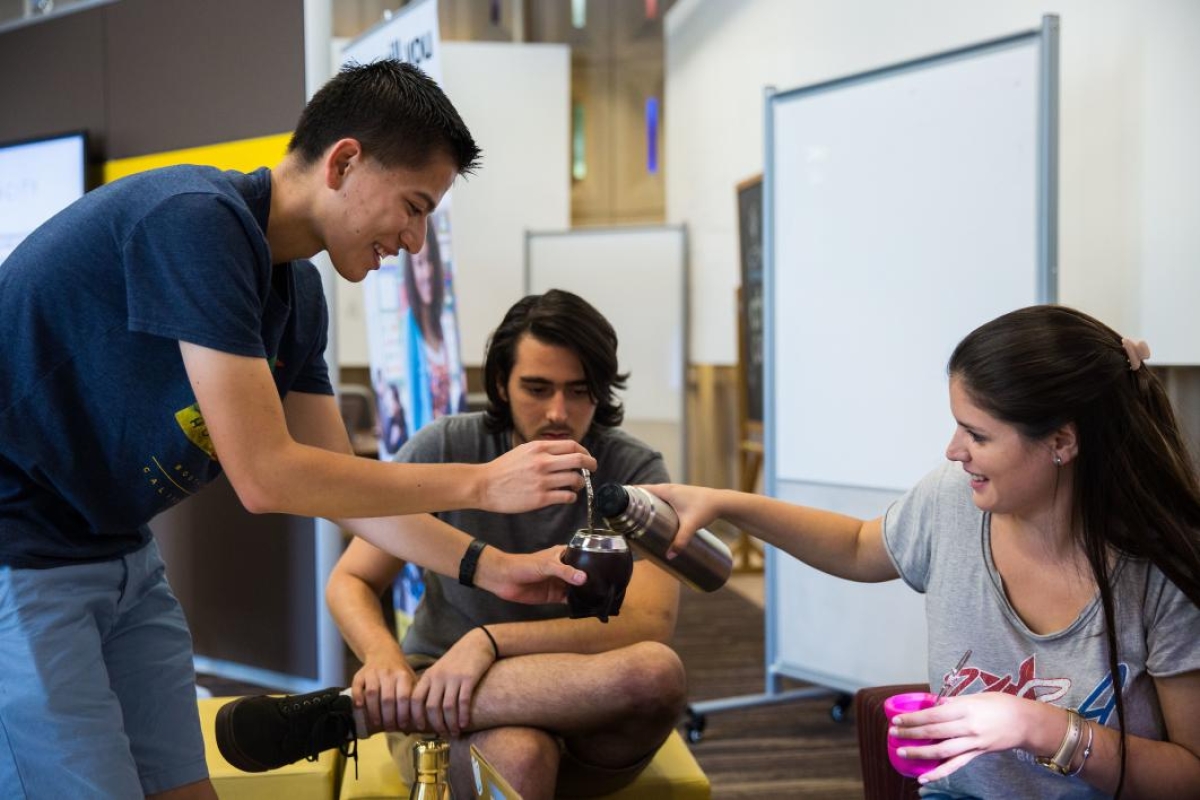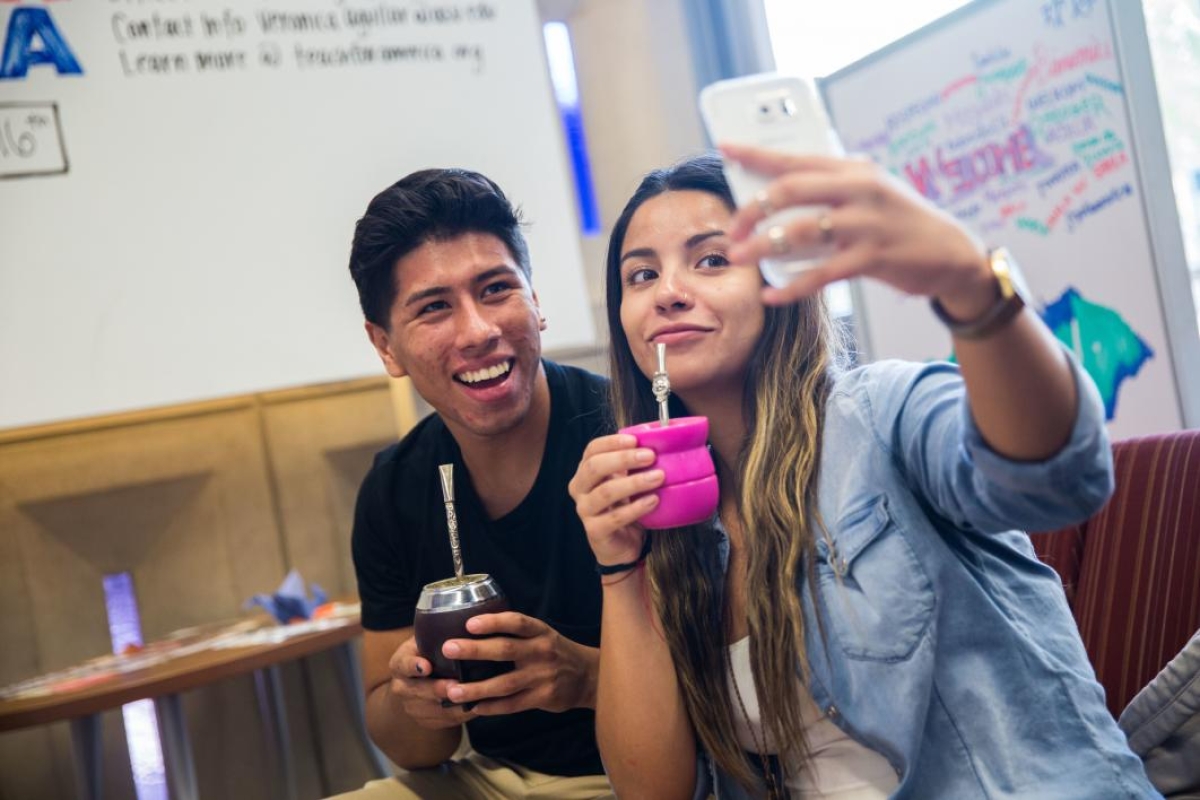South American drink ritual a window into culture
ASU professor's year in Argentina highlights importance of humanities research

A group of Arizona State University students are seated in a circle at the Memorial Union on the Tempe campus. They’re conversing in Spanish and passing around a cup, taking turns sipping from a metal straw. Topics range from everyday gossip, to their studies, to politics.
Yerba mate is what’s in the cup — a caffeinated beverage similar in tasteThe flavor of yerba mate has also been described as a mixture of vegetables, herbs and grass. The filtered straws used to drink it were traditionally made of metal because both the cup and the straw are considered a piece of decoration; ornate ones are not uncommon. As it has become more popular over the years, the cups — traditionally made from gourds — are often made of plastic. There is a cold version of the drink called tereré that is popular in Paraguay and prepared with cold water and ice. to green tea that is commonly drunk in South America, where several of the students hail from. It has exploded in popularity, particularly among people in Argentina because of its strong cultural association with national pride that swelled with the fall of dictatorships and the rise of democracy in the 1980s.
ASU associate professor Julia SarrealJulia Sarreal is an associate professor at the New College of Interdisciplinary Arts and Sciences' School of Humanities, Arts and Cultural Studies. just returned from a year in Argentina, where she spent her sabbatical studying the history, culture and production of yerba matepronounced like latte, with the help of an Institute for Humanities Research grant. She first encountered it in Paraguay while stationed there in the Peace Corps, and she quickly learned that refusal of the bitter beverage was not an option.
“You have to drink it,” said Sarreal, or it is seen as a cultural affront. “And it’s not just about the beverage; it’s the process of drinking it. It’s a very social drink. That’s how you build relationships and connections.”
The history of yerba mate’s place in Argentinean culture goes back to the early 20th century, when the country first began cultivating it. Back then, it was mostly drunk by laborers and soldiers. As time passed, it found a place in people’s homes, where the ritual associated with it served as way for families to bond.
It has since spread throughout the world, gaining an appreciation in Middle Eastern countries like Syria and Lebanon. It’s even gaining momentum in the U.S., where somewhat watered-down versions like Brisk Mate can easily be found at corner convenience stores, and more authentic versions can be found at stores like Trader Joe’s and Sprouts. (See a video at the end of this article on how to prepare it.)
“It’s important in this age of globalization to understand cultural differences,” said Sarreal.
Another thing Sarreal feels is important to understand: the origins of the things we consume. During her year in Argentina, she spent six weeks in the Misiones Province, where much of the yerba mate is produced. There, she met with companies and learned all the aspects of the production process.
“I really saw the realities of the people producing it,” said Sarreal, which sometimes included unfair pay, black-market dealings and less-than-ideal working conditions. She plans to go into more detail about that, as well as yerba mate’s history and cultural importance, in a book she’s writing on the subject.
“My book will be looking at yerba mate as a way to get a different perspective on Argentinean history,” she said.
It has already had an effect on ASU’s history: Business undergrad Paulina Orqueda and Spanish grad student Thomas Shalloe recently formed the university’s first-ever yerba mate/South American student club, El Club del Mate at ASU - Club Sudamericano. It began with just the two of them, meeting on campus to study and drink mate. Soon, other students showed an interest and joined in.
The drink and the ritual hold a special place in their hearts, Orqueda having been born in Argentina and Shalloe having spent a good deal of his youth there.
“One of the things I miss about home is when people in the neighborhood would pull chairs out into the street, sit in a circle and drink mate,” said Orqueda. Now she can do that at ASU.
As for Sarreal, being able to do meaningful research that she can incorporate into her classroom is the best of both worlds.
“I love that ASU supports me doing research, and that I get to balance that with teaching,” she said. “When I’m really excited about my research, I can impart that into the classroom.”
How to make traditional (hot) yerba mate:
